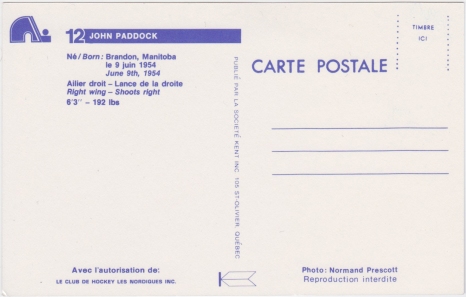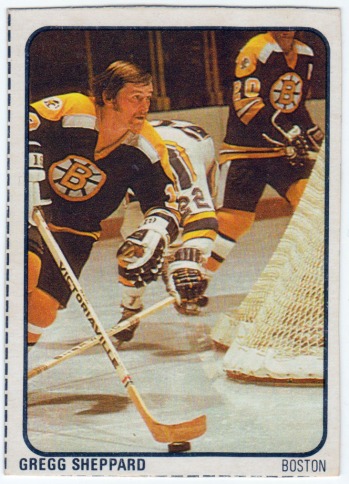 Back in the spring of 2007, I needed a roommate. All my friends were either living with girlfriends or locked into leases so I had to go on Craigslist. After showing the apartment to dozens of weirdos (you know, the type of people who normally need help from the internet finding a roommate) a nice Canadian girl named Sally, who was going to Boston University for grad school, contacted me. She was up in Winnipeg for the spring and summer but sent her friend to look at the place to “make sure you’re not a serial killer.” I knew right then she was going to be an awesome roommate. Anyway, when I met with the friend I asked how she knew Sally she said their dads worked together in Winnipeg and then there employer relocated and they both moved to Phoenix. “Just like the Jets,” I said. She laughed awkwardly. “Actually, it was the Jets,” she said. “What position?” I pressed, figuring she’d say marketing or something. “Head coach and GM.” I almost fainted. Turns out my (then) future roommate’s father was this guy: John Paddock. The former head coach and general manager of the Winnipeg Jets. The guy who coached Selanne during his 76 goal season. The guy who was currently the assistant head coach of the Ottawa Senators.
Back in the spring of 2007, I needed a roommate. All my friends were either living with girlfriends or locked into leases so I had to go on Craigslist. After showing the apartment to dozens of weirdos (you know, the type of people who normally need help from the internet finding a roommate) a nice Canadian girl named Sally, who was going to Boston University for grad school, contacted me. She was up in Winnipeg for the spring and summer but sent her friend to look at the place to “make sure you’re not a serial killer.” I knew right then she was going to be an awesome roommate. Anyway, when I met with the friend I asked how she knew Sally she said their dads worked together in Winnipeg and then there employer relocated and they both moved to Phoenix. “Just like the Jets,” I said. She laughed awkwardly. “Actually, it was the Jets,” she said. “What position?” I pressed, figuring she’d say marketing or something. “Head coach and GM.” I almost fainted. Turns out my (then) future roommate’s father was this guy: John Paddock. The former head coach and general manager of the Winnipeg Jets. The guy who coached Selanne during his 76 goal season. The guy who was currently the assistant head coach of the Ottawa Senators.
Again, this was March 2007. The Senators ripped through the Eastern Conference playoffs and faced the Ducks in the finals. Visions–albeit delusional–of the Stanley Cup in my living room danced in my head. Of course, the Sens lost in five games but after Bryan Murray was promoted to GM he stepped down as head coach and gave the job to John. So by September I was living with the daughter of an NHL head coach.
That fall and early winter was a blast. The Senators won 15 out of their first 17, an NHL record. Emery and Gerber were impossible to score on and Spezza, Alfredsson, and Heatley were unstoppable. We had NHL Center Ice which meant we got to see it all. (Some of my happiest hockey memories are watching Hockney Night in Canada that season before going out with friends on Saturday nights. Remember, we Americans miss these!) In January, John was named the Eastern Conference head coach. I was certain that summer, the Stanley Cup would be in my living room.
As you probably remember, things didn’t quite work out. The Senators imploded after the All-Star game. By the time they came to Boston in February, there were whispers that he’d be fired. Sally and I and her sisters went to the Garden for the game and the Bruins thrashed the Senators 4-0. I’ve never been so sad to see the B’s win. At this point, I still hadn’t met John but we went down to the locker room to see him after the post game.
I had been looking forward to this moment for months. I pictured myself walking around the locker room like George Costanza hanging around the Yankee clubhouse helping Alfredsson with his wrist shot and Ray Emery with his uppercut. Instead, John was waiting for us outside. I swear this is exactly how I was introduced to him:
Sally: Did it happen?
John: I just talked to Bryan. They let me go.
Sally: Oh god. I’m so sorry, Dad. <the most awkward silence you can imagine> By the way, this is my roommate, Justin.
me: I literally don’t know what to say.
Things got stranger from there. We went back to the Ritz to wait for John and say goodbye before he flew home. While in the lobby of the hotel, a TSN reporter noticed the girls were wearing Senators shirts and hats:
TSN reporter: Sens fans, eh?
Sisters Paddock: Yes.
TSN reporter: <unaware who he was talking to>Don’t worry, I work for TSN and I just got the news that Paddock was fired. Things should get better soon.
One of the sisters: HE’S OUR DAD.
Instead of apologizing, the reporter mumbled something along the lines of “Well, you have to admit he wasn’t doing a good job.” The four girls lost it and started literally screaming at him until he left the lobby of the four-star hotel we were all in. I can say without a shred of exaggeration that these two conversations, fifteen minutes from each other, were among the most surreal moments of my life.
John went back to Ottawa for a few days but having just been fired, he felt uncomfortable going out in the city. We lived in Allston (I still do) which is like the Brooklyn of Boston and Sally thought a hip neighborhood consisting of grad students and musicians was the perfect place to hideout. In those pre-Bruins Stanley Cup days no one cared about hockey in this neighborhood unless it was a vintage Whalers shirt or hat. So I had a former NHL’er LIVING ON MY COUCH. (Though he had a brief playing career, John scored a dramatic goal in Game 6 of the 1980 Stanley Cup Finals, staving off elimination for the Flyers and forcing overtime.) We’d stay up late watching west coast games and drinking beer. It was the greatest thing ever.
One last quick story: once I woke up early for work and he was sitting on the couch reading a copy of Nylon. I had an existential crisis for him thinking how he went from the All-Star game to living on an Ikea couch in a student ghetto over the course of a month. Things got better for him though; he coached the Philadelphia Phantoms down in the AHL the next year before being promoted to being an Assistant GM with the Flyers. Sally moved out in June and, sadly, I never talked to John again.
I bet he misses hockey as much as I do, though.


























